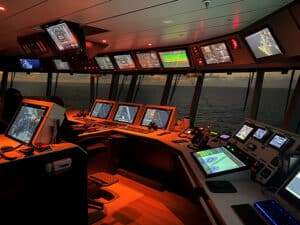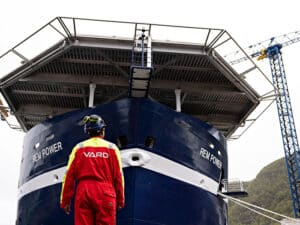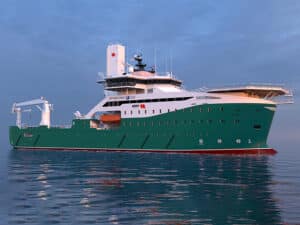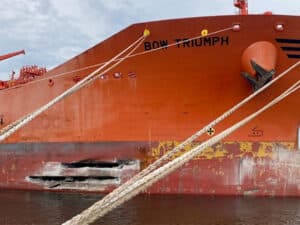
VIDEO: Huisman launches offshore wind feeder vessel solution
Written by Nick Blenkey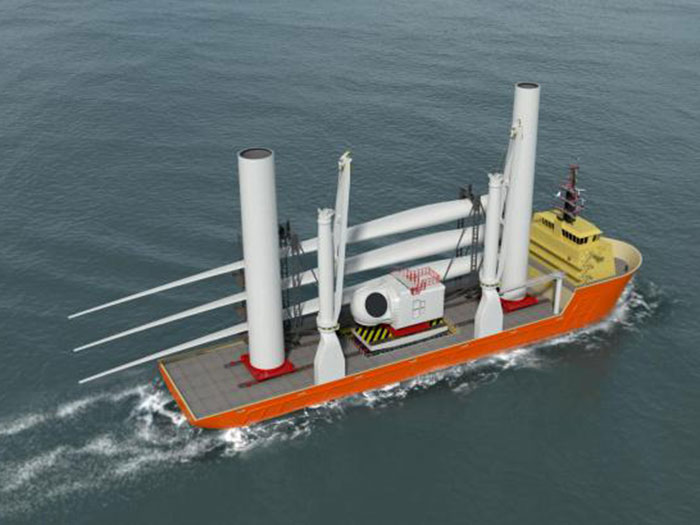
Image: Huisman
Schiedam, Netherlands, based Huisman Equipment B.V. is introducing a motion compensated platform to quickly and safely transfer wind turbine components from a Jones Act feeder vessel to an internationally flagged wind turbine installation vessel.
The motion compensated platform provides a stable deck area as it actively counterbalances the effects of vessel motions. This means that lifting heavy components and moving an empty jack-up vessel can be done in more severe weather conditions, significantly increasing the weather window for operations.
The dimensions and capacities of the motion compensated platform are optimized for next-generation wind turbines and are designed to compensate for 5 degrees of vessel motions.
The motion compensated platform can be integrated into the hold of a vessel and aligned with the main deck, making it easy to skid cargo across the platform.
“By using an offshore rated feeder vessel equipped with our motion compensated platform, the jack-up vessel can continue installation work without having to shuttle back and forth to load new components,” says Cees van Veluw, Product Manager at Huisman. “Maximizing the operational time results in a faster and more reliable delivery of an offshore wind farm, compared to more traditional feeder solutions.”
Huisman is aiming to grow its presence in the U.S. offshore wind market. In December 2020, Huisman was contracted by the Keppel AmFELS shipyard in Brownsville, Texas, for the delivery of a 2,200 t leg encircling crane for the world’s first Jones Act compliant wind turbine installation vessel, Charybdis, ordered by Dominion Energy. In May 2020, the first monopile foundations in U.S. federal waters were installed by Jan de Nul’s vessel Vole au Vent, using Huisman’s motion compensated monopile gripper.
- The Huisman announcement follows earlier announcements from two other Netherlands based companies of offshore wind feedering solutions based on motion compensation technology — C-Job Naval Architects (which is offering a feeder ship design incorporating Ampelmann technology) and Barge Master BV, which has launched the BM-Feeder motion compensated platform, designed to be installed on existing offshore vessels or barges


